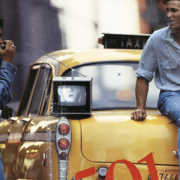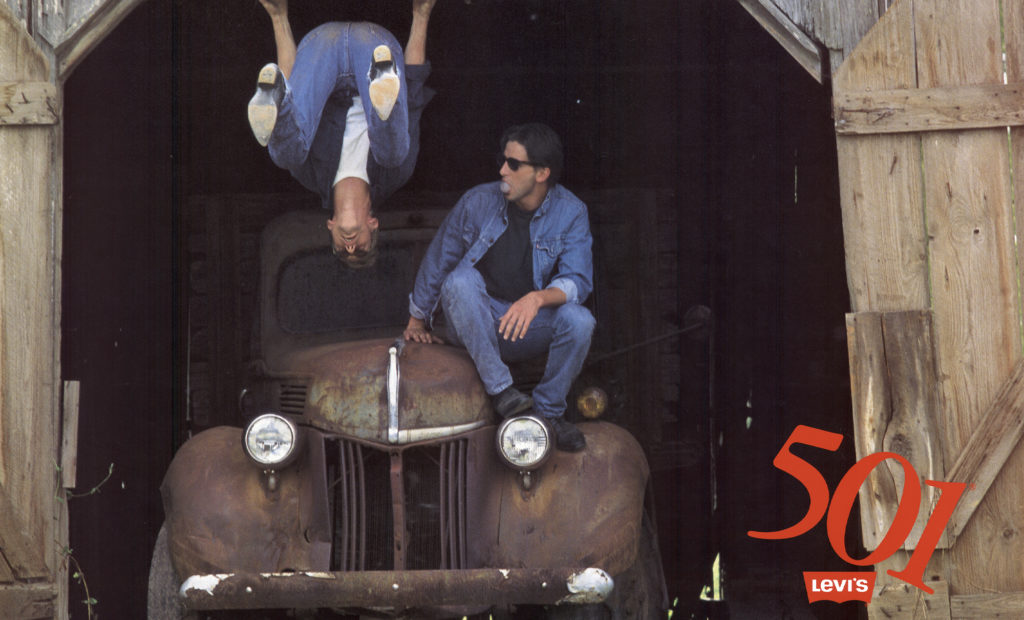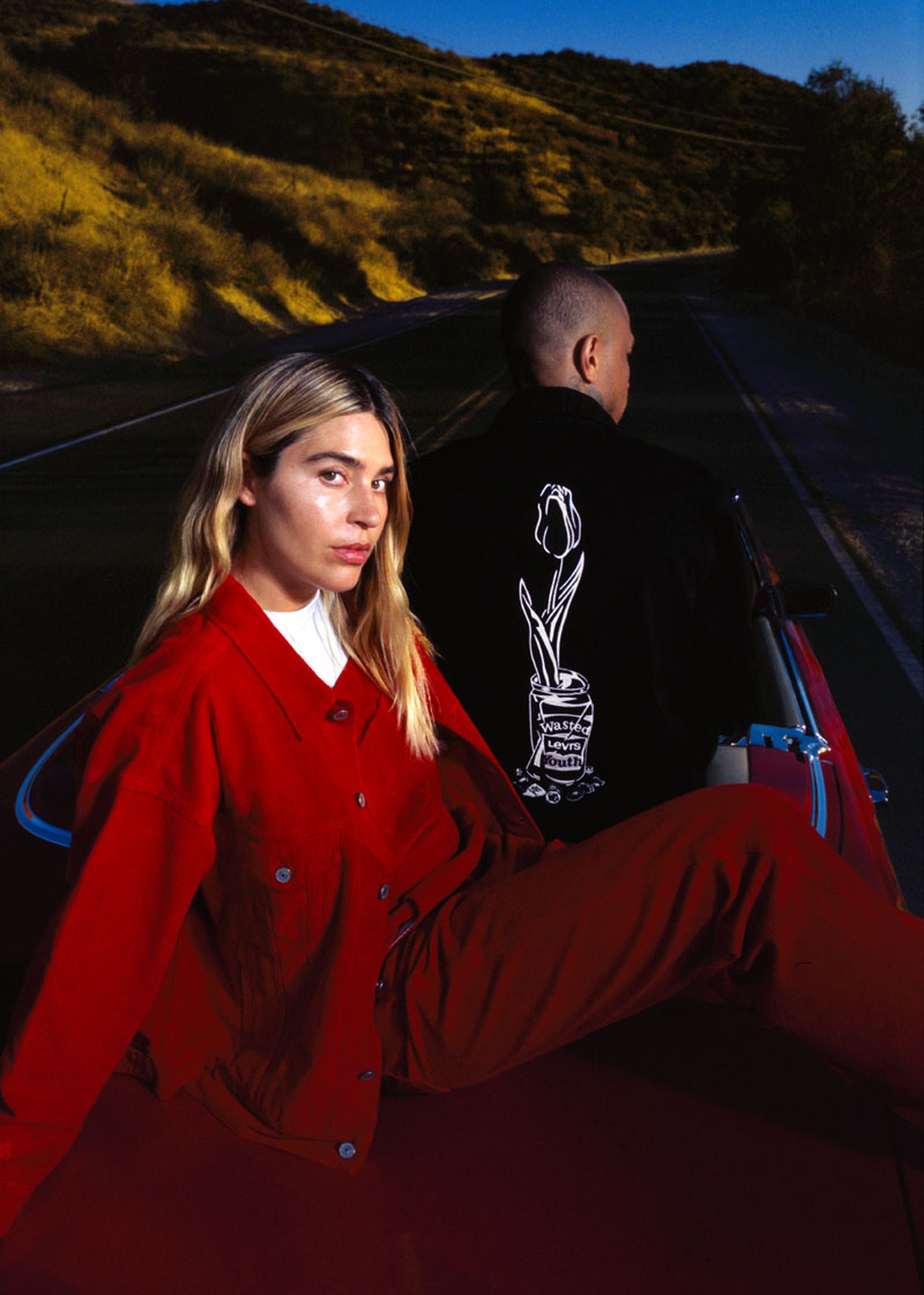History of Levi’s: The Everlasting Uniform of ‘The Cool’

Trends come and go, personal tastes change, fashion is ever evolving. Being cool is something that does not last forever. You’ve got to learn the new made-up words we’re all dropping into conversation now, make sure you’re watching the new releases on Netflix, and adapt and update your wardrobe to remain ‘in style’. There is but one exception to the inevitable death of cool – the blue jean. More specifically, Levi’s.
Levi’s are about as popular as water in the Western world. We all know the name. If you want a good pair of jeans, you get a pair of Levi’s. Why is that? Well, the brand literally invented jeans, and if you want the best, you go to the source.
Levi Strauss, a German Jewish immigrant, settled in New York City along with his family in 1847. He began working with his two older brothers, Jonas and Louis Loeb, in the family business ‘J.Strauss Brothers & Co’ selling wholesale goods such as fabric, thread, and clothing. Strauss, being a business brain and seeing an opportunity for expansion, took advantage of the California Gold Rush and in 1853, followed the hoards of fortune-seekers out to San Francisco. Strauss wouldn’t be panning for scrap gold though, he was going to supply the miners with all the goods they could ever need, and wouldn’t be able to get in the yet-to-be-established mining towns.
When he got to San Francisco, Strauss established his own wholesale dry goods business and worked as the West Coast representative of his family’s firm. His new business sold everything a westward settler or cowboy may need; shovels, picks, lanterns, pots and pans, shoes, long johns, shirts, and dungarees.
The Levi Strauss company thrived. With the foresight to see what these towns would become, Strauss got his foot in the door early and became the top supplier for many newly established businesses. The pay-out was big. He’d struck gold without even breaking ground. Strauss used his fortune not only to build his company, but also to support numerous religious, charitable and social causes, including establishing the first synagogue, Temple Emanu-El, in the city.

One day, Strauss received a letter from store owner, Jacob Davis. Customers had been complaining about the rips mining often caused in their clothing. Davis had a solution, he proposed adding brass rivets that would increase the sturdiness of Levi’s jeans, or ‘waist overalls’ as they were known at the time. While he had the idea, he didn’t have the means or the money. The two paired up and patented the rivet, adding it to all Levi denim products – et voila, the blue jean we all know and love was born.
Now, as far as we knew, those rivets were just there for design – poppers that had nothing to pop onto. In actuality, the rivets are placed on the areas of the jeans that are most likely to be pulled apart by strain or movement. This helps to hold the fabric together, thereby making them last longer. Great for miners doing tonnes of physical labour all day long, great for all us lot going on nights out and falling over in the club.
The literacy level amongst cowboys and those trying to strike gold was a little lower than national average at the time. Considering these people were Levi’s loyal customers, the pair needed to illustrate to them just how sturdy these new jeans were. This is where the iconic Levi’s leather patch came into play. The tag features a drawing of two horses trying to pull apart a pair of jeans which showed to everyone the strength and sturdiness of the item – even a horse couldn’t destroy them.
The famous 501 brand jean, known until 1890 as ‘XX’, quickly became a bestseller and the company quickly grew. Continuing to show design prowess, in 1918, Levi released ‘Freedom-Alls’, a one piece, tunic like affair for women.
Freedom-Alls aimed to release the female population from the restrictive clothing of the era and allow them the same freedom of movement offered to men. The garment bridged the suitable style of the day, looser, drop-waisted and corset-free dresses, with what they hoped would be the womenswear of the future, trousers. Levi’s first take on womenswear was essentially a belted tunic worn over harem pants. Freedom-Alls never caught on in mainstream America, from the explanation of their aesthetic it’s not impossible to see why. But the designer at least took into account the clothing inequality faced by women at the time and tried to somewhat rectify it.
Not held back by the flop that was Freedom-Alls, by the 1920s, Levi’s denim jeans were the top-selling men’s work pants (trousers) in the United States.

So how did a popular male’s work garment from the 1920’s become a wardrobe staple of anyone cool in the 21st century? For that we must thank cowboys. In the 1930’s, authentic cowboys wore Levi’s jeans. Also in the 1930’s, middle class America became obsessed with Western Movies. Cowboys on the silver screen, just like the real deal, wore 501’s. These films led many to travel out to the ranches in the west to, not only find hunks like John Wayne and Clint Eastwood, but to purchase their first pair of Levi’s jeans and take them home to wow their friends – and help spread the Western influence to the rest of the country.
The protagonists of the Western films looked cool as hell. They were free, gun-slinging cowboys who took no nonsense, lived adventurous, hard-drinking lives and they all looked awesome in their hats, bandanas, spurs, and Levi’s jeans. The look became synonymous with effortless cool, and it still is. Levi’s in Western films were the day’s equivalent to Kylie Jenner naming the shade of lipstick she swears by; all of a sudden everyone wanted to dress like the rebellious loner who never left home without his Levi’s.
Levi’s became the uniform of the ‘cool’. They became a symbol of jadedness, a necessity for anti-social young people who rejected the social norms of the times. Motorcycle Club’s adopted Levi’s as their uniform for riding and working on their bikes because they could take a beating and somehow look better the more worn in they were. Cowboys in Western’s made jeans look cool, MC’s took them to another level and made them dangerous. The 1950’s took the dangerous label and ran with it, simultaneously villainizing and upping the allure of Levi’s.

1950’s popular culture catapulted the already popular Levi jeans into the stratosphere. James Dean’s Rebel Without A Cause cemented the idea of jeans being the uniform of the young, withdrawn, rebellious, and cool. In 1956 Elvis Presley wore the first black denim jeans released by Levi’s in his film Jailhouse Rock.
Elvis didn’t actually like the jeans, but that’s besides the point. Black denim became a style icon in its own right. Levis’ association with Elvis Presley and their ‘endorsement’ of his ‘rebellious hip swinging’ had a significant impact in the jeans becoming the must-have item for the youth of the 1950s.
From the 50’s, Levi’s found themselves continually adopted as the de-facto uniform for radical, non-conformist groups; musicians, poets, greasers, hippies. All chose the functionality and ‘dangerous label attached to denim to personify their ideals. Jeans were so intertwined with the anti-establishment revolution, that denim was even banned in some schools across the globe for being a ‘bad influence’. The portrayal of denim-clad delinquents in movies and on TV led many schools to prohibit denim in the classroom, fearing that wearing it would make students go against authority.
In 1999, Time magazine named the 501 Jean the Fashion Item of the Century. Levi’s denim was there through every movement of youth rejecting the ideals of previous generations and rebelling against societal norms of how to dress and behave. Levi’s has been around through everything that has led to defining who we are as a society today, acting as the uniform of fighting the powers that be. They will be cool forever.
Discover more from GUAP’s Fashion section here




![ZINO VINCI’S ‘FILTHY & DISGUSTING’EP BRINGS YOU TO THE CORE OF THE ARTIST [@ZinoVinci]](https://guap.co/wp-content/uploads/2023/10/Zino-4.jpg)



